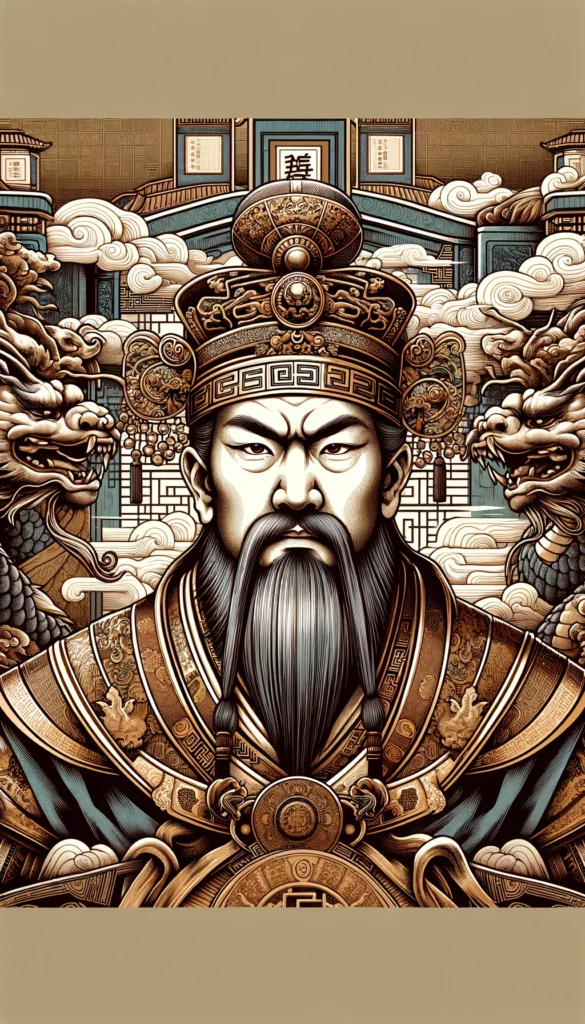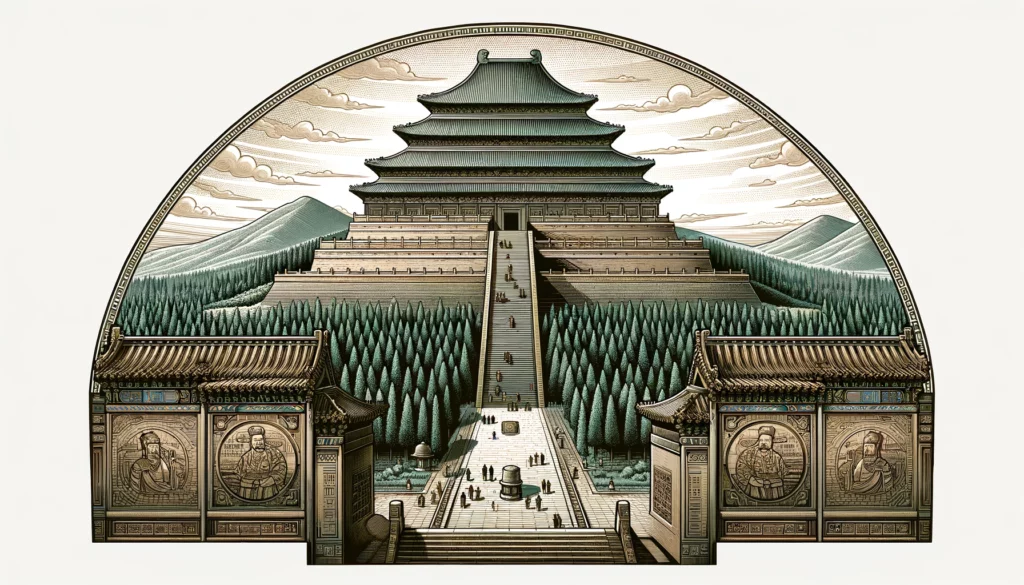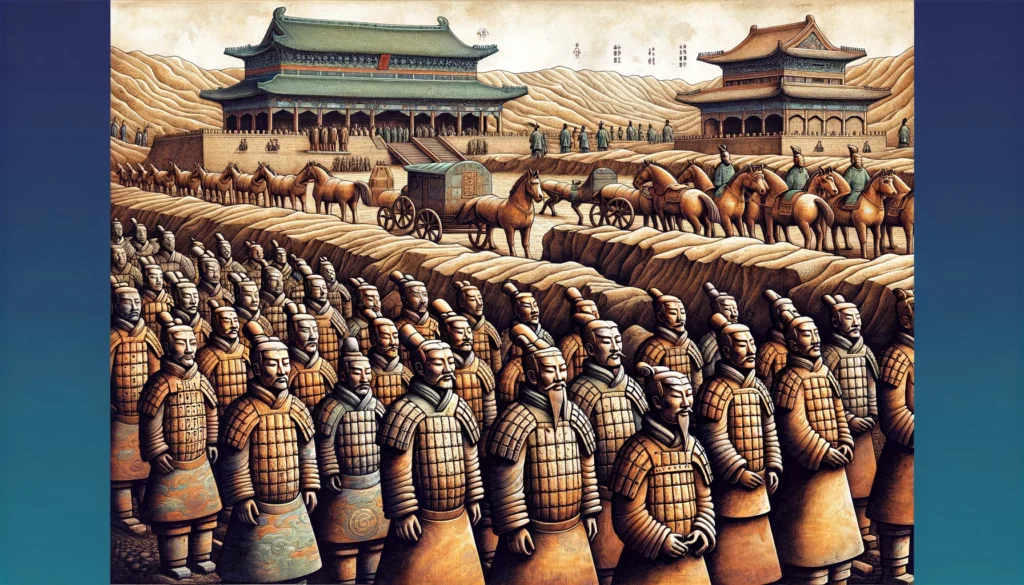
The Tomb of The First Emperor of Unified China Qin Shi Huang and His Enduring Legacy
Qin Shi Huang, born Ying Zheng, reigned as the first emperor of China from 221 BC to 210 BC. He was the founder of the Qin dynasty and was pivotal in unifying the various warring states into a centralized empire. His reign marked the end of the Warring States Period and the beginning of a new era in Chinese history. Notably, Qin Shi Huang adopted the title of “emperor” instead of “king,” establishing a precedent that would last for over two millennia. His legacy includes profound reforms and monumental constructions, including the famous Terracotta Army that guards his mausoleum. This article delves into his life, accomplishments, the significance of the Qin dynasty, the influence of Legalism, and the grandeur of his mausoleum.
The Life and Reign of Qin Shi Huang
Early Life and Rise to Power
Qin Shi Huang was born as Ying Zheng in February 259 BC in Handan, State of Zhao. At the age of 13, he ascended the throne of the Qin state, which was one of the most powerful of the seven warring states. His early reign was dominated by regents, but by the age of 22, he took full control and embarked on an ambitious campaign to conquer the other six states. By 221 BC, he succeeded, establishing the Qin dynasty and becoming the first emperor of a unified China.
Unification of China
The unification of China under Qin Shi Huang was a monumental achievement. It brought an end to centuries of feudal division and warfare. Qin Shi Huang’s centralization efforts included the standardization of the Chinese writing system, weights, measurements, and currency. These reforms facilitated trade, communication, and governance across the vast empire.
Administrative Reforms and Legalism
Qin Shi Huang’s rule was heavily influenced by Legalist philosophy, which emphasized strict laws and central control. He abolished feudalism, replaced it with a centralized bureaucracy, and implemented a uniform code of laws. Legalism’s harsh measures ensured compliance and order but also led to widespread fear and resentment. Despite its unpopularity, this approach laid the foundation for China’s future governance structures.
The Mausoleum of the First Qin Emperor

Construction and Design
The Mausoleum of the First Qin Emperor, located in Lintong District, Xi’an, Shaanxi province, was constructed over 38 years, from 246 to 208 BCE. The tomb complex was designed to mirror the layout of Xianyang, the Qin dynasty’s capital, with an inner and outer city. The main tomb chamber, which has yet to be excavated, is believed to house the emperor’s coffin and numerous artifacts.
The Terracotta Army
One of the most significant discoveries related to the mausoleum is the Terracotta Army, unearthed in 1974. This vast collection of life-sized terracotta soldiers, horses, and chariots was created to protect Qin Shi Huang in the afterlife. Each figure is unique, showcasing incredible craftsmanship and providing valuable insights into the military organization and artistry of the Qin dynasty.
Historical and Cultural Significance
The mausoleum and the Terracotta Army are UNESCO World Heritage Sites, recognized for their immense historical and cultural significance. They symbolize the grandeur of the Qin dynasty and Qin Shi Huang’s ambition. The mausoleum remains largely unexcavated due to concerns about preservation and potential hazards, adding to its mystique.
Legacy of Qin Shi Huang
Reforms and Innovations
Qin Shi Huang’s reign brought about several lasting reforms. The standardization of the writing system, weights, measures, and currency helped unify the diverse regions of China. The construction of an extensive road network facilitated communication and military movement. His most famous architectural feat, the Great Wall of China, was initiated to protect the empire from northern invaders.
Impact on Chinese History
The Qin dynasty, despite its brief duration, had a profound impact on Chinese history. It established the framework for a centralized imperial state that would endure for over two thousand years. The use of the title “emperor” set a precedent for future rulers. Qin Shi Huang’s legalist policies influenced subsequent dynasties, even as Confucianism later gained prominence.
Cultural Legacy
Qin Shi Huang’s legacy is also reflected in Chinese culture and historical consciousness. The story of his unification of China, his monumental tomb, and the Terracotta Army are integral parts of China’s cultural heritage. They are symbols of the country’s rich history and the achievements of its ancient civilization.

Conclusion
Qin Shi Huang, the first emperor of unified China, was a visionary leader whose reign transformed Chinese history. His accomplishments in unifying China, implementing significant reforms, and constructing monumental projects like the Terracotta Army and the Great Wall have left an indelible mark on the nation. While his rule was marked by harsh legalist policies, his legacy is one of enduring influence and cultural significance. The Mausoleum of the First Qin Emperor remains a testament to his ambition and the grandeur of his era, continuing to fascinate and inspire people around the world.
